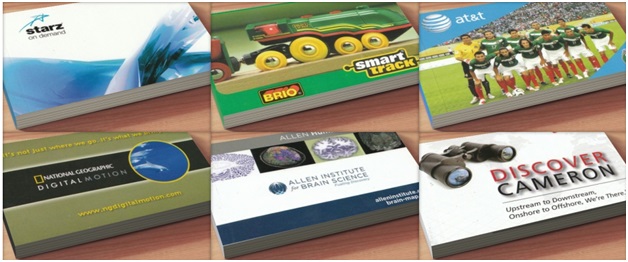 Known by some as hand cinemas and magic books, these little booklets created scenes and optical illusions without any use of technology at all, and although now many are manufactured mechanically, the effort that goes into designing them does not go unnoticed. Here at Flippies, we are proud of these little books which have created so much fun and charm with their mere presence and as such, we want to give you a short history so that you can gain some intriguing knowledge about the wonderful world of these small books.
Known by some as hand cinemas and magic books, these little booklets created scenes and optical illusions without any use of technology at all, and although now many are manufactured mechanically, the effort that goes into designing them does not go unnoticed. Here at Flippies, we are proud of these little books which have created so much fun and charm with their mere presence and as such, we want to give you a short history so that you can gain some intriguing knowledge about the wonderful world of these small books.
Overview
The first flipbook is documented to have appeared in 1868. Patented by John Barnes Linnett as the Kineograph, this form of animation was a first and exhibited a series of photographic images. After selling his patent to an American named Henry Van Hovenbergh, flipbooks became the most in-demand optical toy. Taking advantage of Edward Muybridge’s discovery of moving images with photographic quality, Hovenbergh tweaked the design and also stacked the pages with a little space to create easier movement.
Flipbooks were then largely considered as toys for children, to the extent that companies such as Cracker Jack started offering them as toys. As their popularity grew, other brands which catered to adults with products such as cigarettes and automobiles started marketing their products by creating flipbooks. All the way through from 1940 to 1960, the trend stayed strong until some innovative marketers for even bigger brands realized their potential.
History of Use in Business
1960s was the era of the Mad Men (and women). Completely open to new ideas about commercial advertising and marketing, companies were now looking for fresh ways to promote their products without having to drone on about the virtues of the services. Big names such as Disney, Post Cereals, Ford and Gillette wanted something new yet classic, and with flipbooks, that’s what they got. Flipbooks were used as unique marketing brochure examples, novelties and promotional giveaways for businesses and they worked like a charm.
However, as the 1970s ended, so did the trend of the flipbooks and with the technological era right around the corner, no one expected flipbooks to come back.
Current Use of Flipbooks
 With technological advances such as 5-D animation and special effects, companies which were now running out of ideas were in desperate need of a marketing tool which was effective yet subtle, and that’s where flipbooks splashed back in the marketing world. The magic of a flipbook is one which cannot be replaced, and whether you’re a middle-aged professional or a kid, a flipbook will always be fun.
With technological advances such as 5-D animation and special effects, companies which were now running out of ideas were in desperate need of a marketing tool which was effective yet subtle, and that’s where flipbooks splashed back in the marketing world. The magic of a flipbook is one which cannot be replaced, and whether you’re a middle-aged professional or a kid, a flipbook will always be fun.
Companies and businesses such as the National Geographic, Nicktoons, Samsung, Subaru, Goodyear Tires, Olympus, CAT Footwear and Motorola Smartphones etc, have all used flipbooks to promote their products and have received a lot of positive feedback for their subtle methods of advertising.
Appearing in the 19th Century, these small books were used to add some humor and entertainment to the otherwise run-of-the-mill advertisements. With a flip of a few hundred small pages, you’d see a scene play out that would either be cute, inspiring or simply hilarious. Flipbooks made a promising entry into the 20th Century and even as we move on into the technological era, they seem to have not lost their charm.

